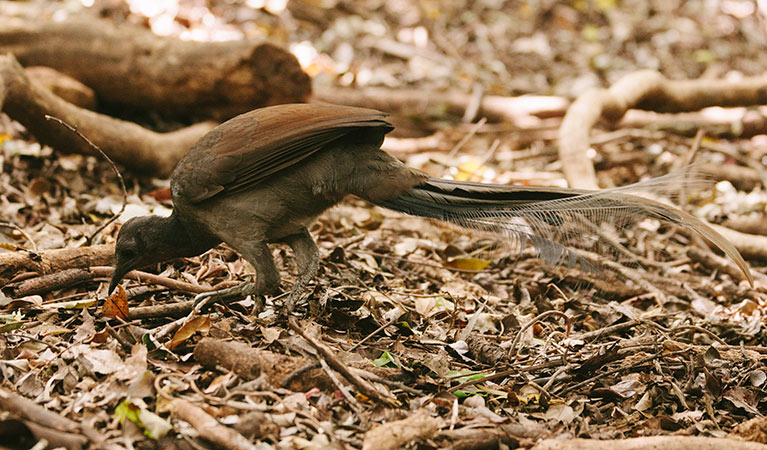School excursion
A dynamic ecosystem: Minnamurra Rainforest
Budderoo National Park
Overview
Senior biology students will hone their skills on this Stage 6 (Years 11-12) fieldwork study at Minnamurra Rainforest in Budderoo National Park. They'll conduct fieldwork, gather data and identify distinguishing features of the rainforest.
Read more about A dynamic ecosystem: Minnamurra Rainforest
This school excursion provides a unique opportunity for students to use a variety of fieldwork sampling techniques. Students will gather diverse data and obtain a solid understanding of this fragile and important ecosystem.
This biology excursion is designed to support Module 3 (Biological diversity) and Module 4 (Ecosystem dynamics) of the syllabus, and contributes 5 hours towards a depth study.
For program outline, safety and practical information about this excursion, see info for teachers
| Stage | Stage 6 (Years 11-12) |
|---|---|
| Learning area | Biology |
| Student outcomes |
BIO11/12-7. Communicates scientific understanding using suitable language and terminology for a specific audience or purpose BIO11-10. Describes biological diversity by explaining the relationship between a range of organisms in terms of specialisation for selected habitats and evolution of species BIO11-11. Analyses ecosystem dynamics and the interrelationships of organisms within the ecosystem |
| Objectives |
Students will:
Key inquiry questions:
|
Excursion details
- Availability
- Guided. Available on request. Different length programs are available upon consultation.
- Duration
- 2-5 hr
- Grading
- Easy. Fieldwork will take place along river beside the rainforest path.
- Price
-
Minimum $550 per group for up to 25 students, $22 per student (includes GST).
- Accessibility
- No wheelchair access
- Meeting point
- Minnamurra Rainforest Centre
- Equipment
provided - Yes. Worksheet masters, pre and post-activity resources, and additional references will be provided on booking.
- Booking
- If you would like to organise a NPWS school excursion please get in touch with local staff or use the 'Enquire' link for the online form.
Local alerts
For the latest updates on fires, closures and other alerts in this area, see https://www.nationalparks.nsw.gov.au/education/stage-6-biology-dynamic-ecosystem-minnamurra-rainforest/local-alerts
Operated by
- School excursion inquiries - Minnamurra Rainforest Centre
- 02 4236 0469
- discovery.scr@environment.nsw.gov.au
- Budderoo National Park, Minnamurra Falls Road (Tourist Drive No.9), via Jamberoo NSW 2533
Park info
- in Budderoo National Park in the South Coast and Country NSW regions
Budderoo National Park is always open but may have to close at times due to poor weather or fire danger. The park gates at Minnamurra Rainforest Centre open at 9am and close at 5pm every day.
-
Park entry fees:
$12 per vehicle per day only in the Minnamurra Rainforest area. Bus or taxi: $4.40 per adult and $2.20 per child.
Buy annual pass.
Info for teachers
All the practical information you need to know about A dynamic ecosystem: Minnamurra Rainforest.

